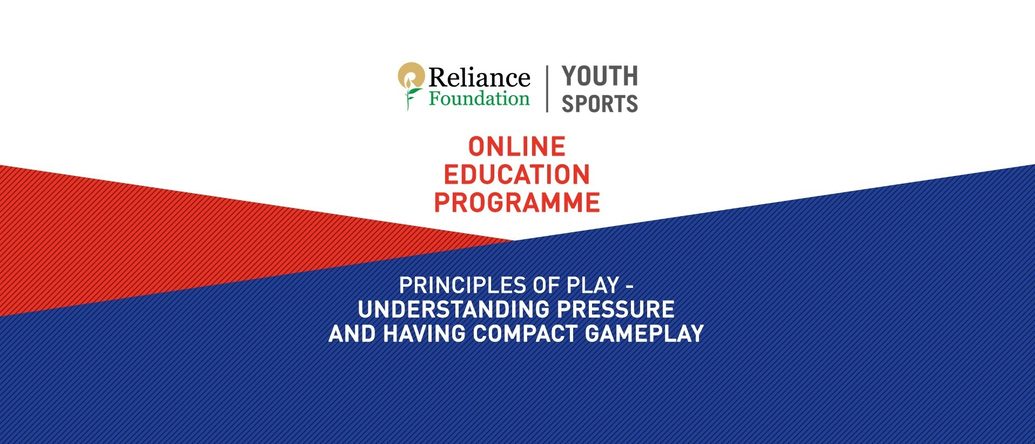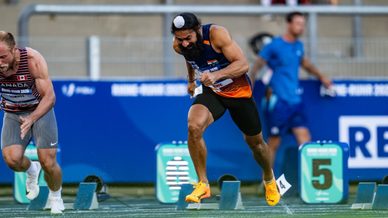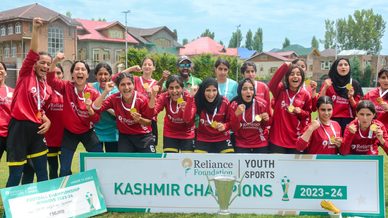Defensive Principles of Play in Football - Importance of Compact Gameplay and Keeping Pressure
Regardless of one’s positioning on the field, defensive principles apply to the whole team. It is easy to assume otherwise - that the defending principles should only apply to defending, and attacking should be left to the forwards.
Regardless of one’s positioning on the field, defensive principles apply to the whole team. It is easy to assume otherwise - that the defending principles should only apply to defending, and attacking should be left to the forwards. But the truth is that all players should be aware of these principles and a team’s defence should begin with the forwards, followed by the midfielders, and then the defenders. Defending as a team is the most effective way of defending on the field of play and many a time it results in unimaginable outcomes.
In order to let our athletes better understand the importance of Defensive Principles of Play in football, we recently conducted a webinar on this topic, as part of our Online Education Programme. The session, carried out by Saksham Kakkar, Coach Under 13, Reliance Foundation Young Champs, highlighted the aspects of pressure, having a compact gameplay, and recovering possession and control.
Saksham introduced the topic by telling us about the significance of defensive principles of play carry and why they are important by stating that:
- They help players in transmitting it on the pitch
- They are aimed at coaches coaching players aged 12 and above
- They help players understand the game better
He then went on to explain the 5 major components of the defensive principles of play throughout the session and they are as follows:
- Pressure
- Compact
- Delay/Recover
- Cover/Balance
- Control/Restraint
Here’s a brief summary of these components:
1) Pressure
This is the role of the first defender as he is generally the one closest to the ball. The idea here is to win back possession of the ball before the opposition can find a rhythm or build any significant attacks. This is done through a systematic approach, slowing down the attacker (delay) by moving with them, controlling the attacker once they have been slowed down, and finally regaining the ball from the attacking team by tackling or intercepting.
Most often, the first defender does not tackle. Instead, they approach, delay, and finally gain control to the point where the second defender is able to intercept the passed ball.
2) Compact
Compactness is the idea of players from one team keeping the largest possible distance between themselves, maintaining links between each other that will keep them in control of the space they occupy and action inside their occupied structure. In other words, compactness is a space-related concept that highlights the distances between a team’s players and refers to the distance between the defensive team’s front players and backline.
3) Delay
The main thing to consider within the concept of the delay principle is to get defenders behind the ball in a good defensive shape to help prevent penetration from the attacking team. An experienced defender will show restraint, stay on their feet, and steer attackers into areas away from their goal. Just a few seconds of delaying an attacker will allow teammates to retreat and offer help. Delaying can relate to both individual and team defending.
4) Cover
This can be provided by one or more players and refers to the distance and angles at which teammates offer defensive help. For simplicity’s sake, the player putting pressure on the ball can be referred to as the first defender and the nearest supporting defender can be referred to as the second defender.
5) Control
When it comes to taking control, both teams use defensive tactics but one plays like a four-man defence and the other like a four-man midfield. This covers the main areas and tactics that teams use when defending. The midfield blocks wide passes and forces play into the strong defensive middle, leaving nowhere for teams to penetrate.
Saksham further highlighted a few key factors essential for both pressure and compact:
For Pressure:
- Distance (to opponents and teammates)
- Space occupied by opponents
- Technical factors
- Area of pitch
- Body position (head position as well)
- Anticipating next action
- Moment of the game/scoreline
- Teammates’ wavelength
For Compact:
- Positionally superior to the opponent/s
- Qualitatively superior to the opponent/s
- Dynamic superiority - always active, never passive
- Mental qualities - communication, concentration, control
He concluded the webinar by detailing the aspects of ‘How’ for both pressure and compact by explaining how they can be applied to the opposition. These factors can be best described through the below-mentioned points:
For Pressure:
- By being always active (hunting body position)
- Mostly towards ball or opponent
- With the right speed
- In relation to ball, teammates, opponents, and space
- With the right footwork
For Compact:
- By forming multiple connections with ideal distances
- By always being compact on the ball side
- Being in multiple lines to avoid extra space for opponents
- Through properly executing pressing triggers
In the end, it can be said that when your team is defending, you want to take away the options and space from the other team - you want to make the field as small as possible for the other team.
In case of queries or if you have any suggestions for webinar topics, please feel free to connect with us on Instagram/Facebook or email us at info@rfyouthsports.com









Your Comments